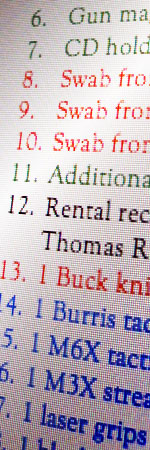Home | Glossary | Resources | Help | Contact Us | Course Map
Archival Notice
This is an archive page that is no longer being updated. It may contain outdated information and links may no longer function as originally intended.
Prioritizing Evidence in the Laboratory
The most common approaches employed by laboratories to prioritize cases include working high-profile cases first (homicides, sexual assaults, etc.) and limiting the number of items analyzed for each case.
Laboratories have developed numerous prioritization schemes that are usually implemented with the understanding that well-justified exceptions will be made. It is imperative that submitting agencies, laboratories and prosecutors continually discuss prioritization of cases with the goal of analyzing the most probative samples for a case as quickly as possible. Fast analysis turnaround time aids in investigations and crime prevention. This allows the laboratory to work efficiently, which benefits everyone involved in the criminal justice system.
Additional Online Courses
- What Every First Responding Officer Should Know About DNA Evidence
- Collecting DNA Evidence at Property Crime Scenes
- DNA – A Prosecutor’s Practice Notebook
- Crime Scene and DNA Basics
- Laboratory Safety Programs
- DNA Amplification
- Population Genetics and Statistics
- Non-STR DNA Markers: SNPs, Y-STRs, LCN and mtDNA
- Firearms Examiner Training
- Forensic DNA Education for Law Enforcement Decisionmakers
- What Every Investigator and Evidence Technician Should Know About DNA Evidence
- Principles of Forensic DNA for Officers of the Court
- Law 101: Legal Guide for the Forensic Expert
- Laboratory Orientation and Testing of Body Fluids and Tissues
- DNA Extraction and Quantitation
- STR Data Analysis and Interpretation
- Communication Skills, Report Writing, and Courtroom Testimony
- Español for Law Enforcement
- Amplified DNA Product Separation for Forensic Analysts


